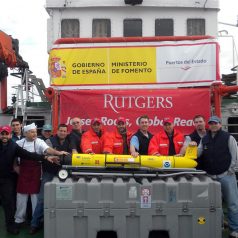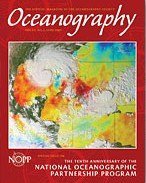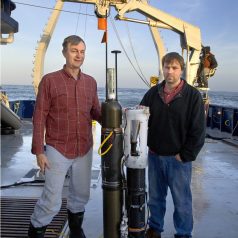
Deep-sea Glider
The first robot to cross the Atlantic offers new possibilities for ocean and climate research. Read more

The first robot to cross the Atlantic offers new possibilities for ocean and climate research. Read more

The first-ever 7,300-mile Atlantic Ocean crossing by an unmanned underwater glider is opening up a new world of ocean technology. Read more

NOPP attended the Oceans ’09 conference in Biloxi, Mississippi from 26-29 October. Read more

For the better part of three decades, Paul G. Gaffney II toured the world’s oceans — above and below — as one of the U.S. Navy’s most respected oceanographers. Read more

A joint expedition funded by MMS and NOAA to study the distribution and abundance of deepwater coral habitats in the Gulf of Mexico recently departed from Key West, Florida. This project is conducted under the auspices of the National Oceanographic Partnership Program. Read more

For funding beginning in FY 2010, the National Oceanographic Partnership Program (NOPP) welcomes research proposals meeting the goal of partnerships between at least two of the following three sectors: academia, industry (including NGOs), and government. Read more

Monmouth University is pleased to announce that on August 12 President Paul G. Gaffney II was named the new chair of the Ocean Research & Resources Advisory Panel (ORAP), a panel created by statute to advise federal agencies regarding ocean science and management matters. Read more

As part of the continued celebration of the first ten years of the National Oceanographic Partnership Program (NOPP), the current issue of Oceanography magazine highlights ocean research conducted through NOPP and the downstream impacts of ocean partnerships on the field of oceanography. Read more

The National Oceanographic Partnership Program (NOPP) presented the Excellence in Partnering award to the Multi-sensor Improved Sea Surface Temperature (MISST) for the Global Ocean Data Assimilation Experiment (GODAE) project. Read more

Oceanographers Jim Bishop and Todd Wood of the U.S. Department of Energy’s Lawrence Berkeley National Laboratory have measured the fate of carbon particles originating in plankton blooms in the Southern Ocean. Read more